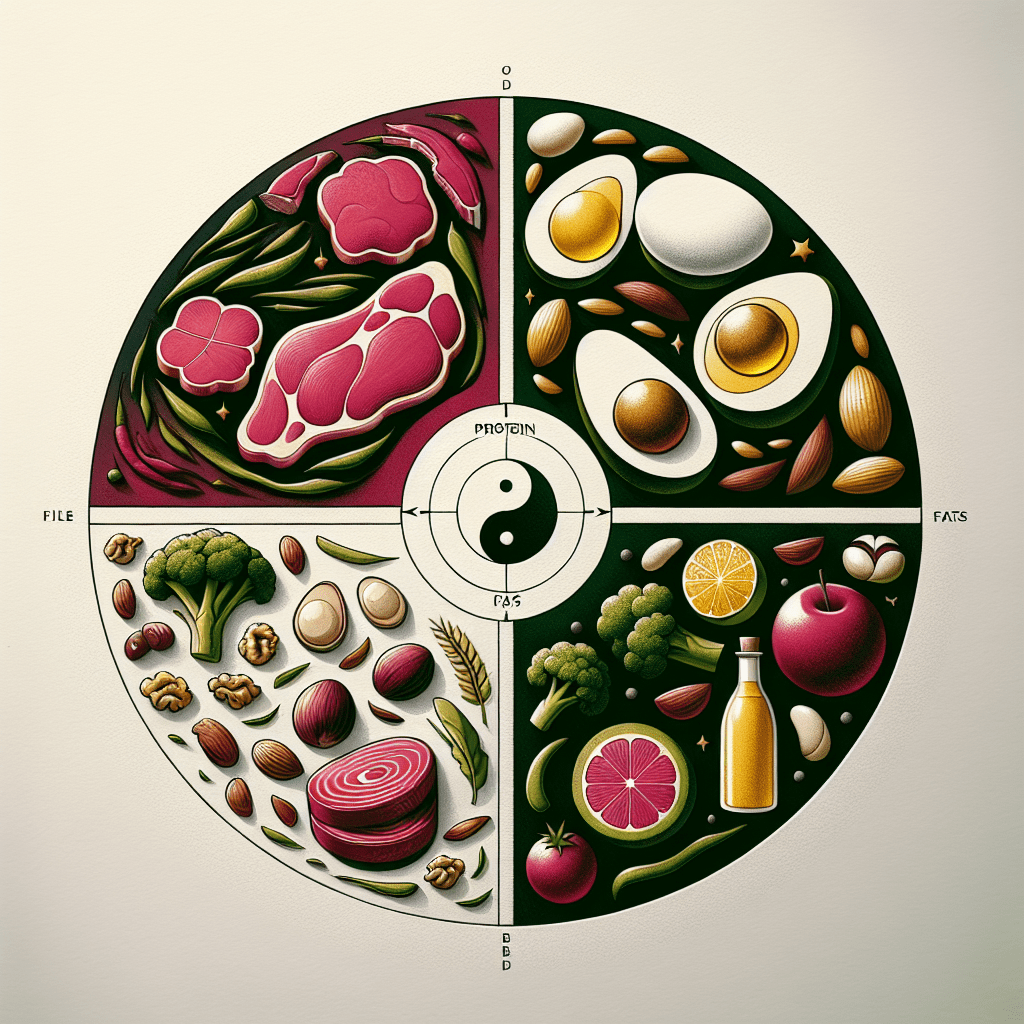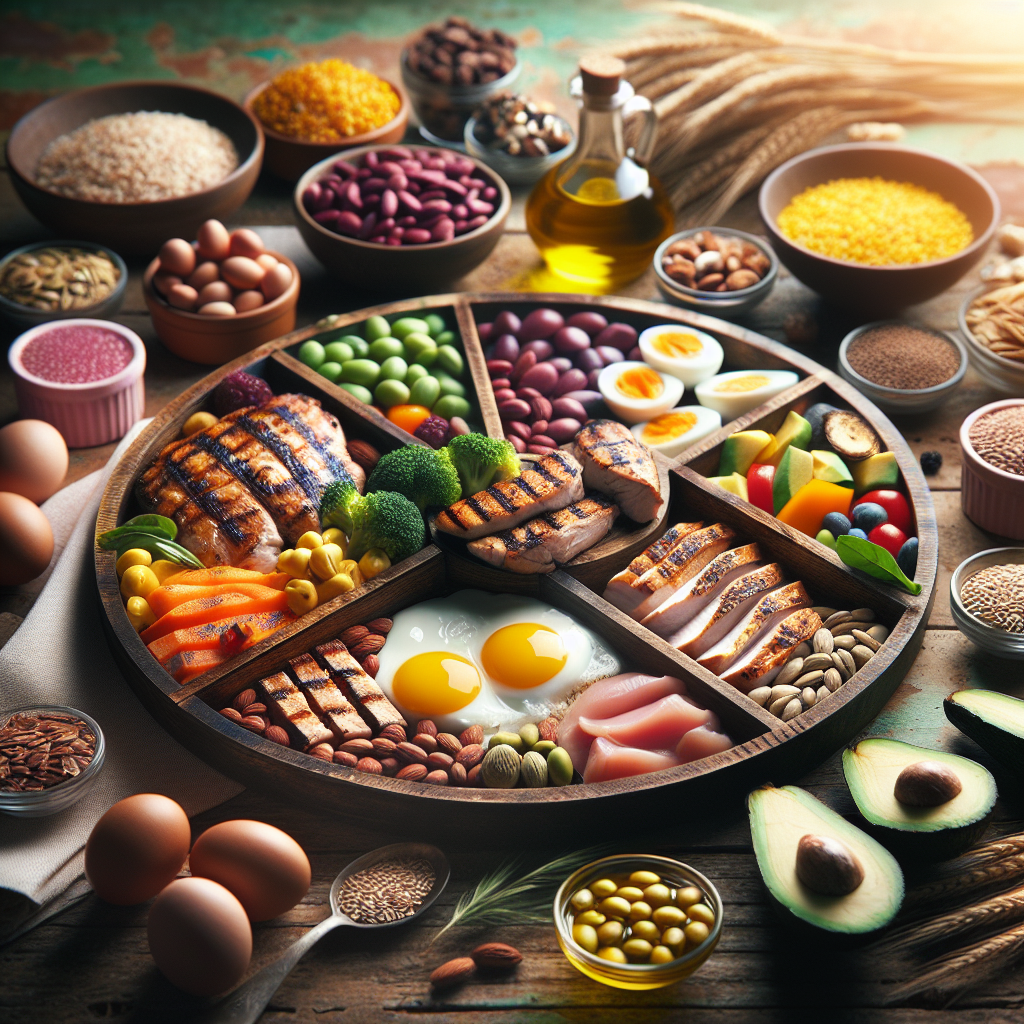Have you ever wondered why some diets work wonders for your friends but leave you feeling tired and unsatisfied? The secret might be in understanding your macros. Creating a meal plan based on macros isn’t just about counting calories—it’s about finding the perfect balance that works specifically for your body and lifestyle.
Understanding the Magic of Macronutrients
Macronutrients—proteins, carbohydrates, and fats—are the building blocks that fuel our bodies. This balance of elements is similar to the ancient Yin-Yang principles that govern health in Eastern philosophy. Unlike micronutrients (vitamins and minerals) that we need in smaller amounts, macros are required in larger quantities and provide the energy needed for everything from basic bodily functions to intense workouts.
Each macronutrient plays a unique role:
- Proteins repair tissues, support immune function, and help build muscle
- Carbohydrates provide immediate energy and fuel for your brain
- Fats support hormone production, cell health, and long-lasting energy
Finding the right balance between these three elements is where the magic happens. This approach aligns beautifully with Eastern philosophies that emphasize harmony and balance in all aspects of life, including nutrition. Just as traditional Eastern medicine seeks to balance elements within the body, a well-designed meal plan based on macros creates nutritional harmony that supports overall wellness.
As one nutritionist puts it, “When you balance your macros correctly, you’re essentially speaking your body’s language—giving it exactly what it needs in the proportions it can best utilize.”
Calculating Your Personal Macro Needs
Creating your personalized meal plan based on macros starts with understanding your unique requirements. This isn’t a one-size-fits-all approach—it’s about customization.
Step 1: Determine Your Total Daily Energy Expenditure (TDEE)
Your TDEE represents the total calories you burn daily, combining your basal metabolic rate (calories burned at rest) with your activity level. Several online calculators can help you determine this number, but here’s a simple approach:
- Calculate your Basal Metabolic Rate (BMR) using the Harris-Benedict equation
- Multiply your BMR by an activity factor:
- Sedentary (little/no exercise): 1.2
- Lightly active (1-3 days/week): 1.375
- Moderately active (3-5 days/week): 1.55
- Very active (6-7 days/week): 1.725
- Extra active (physical job/twice daily training): 1.9
For example, a 35-year-old woman weighing 150 pounds, standing 5’6″, with moderate activity might have a TDEE around 2,100 calories.
Step 2: Adjust Based on Your Goals
Once you know your TDEE:
- For weight maintenance: Consume your TDEE
- For weight loss: Create a deficit of 10-20% (subtract from TDEE)
- For muscle gain: Add 10-15% to your TDEE
Step 3: Set Your Macro Ratios
Now comes the fascinating part—determining the right ratio of proteins, carbs, and fats. While there are common starting points, this is where Eastern wisdom can offer additional insights by considering your constitutional type.
Common macro ratios include:
- Balanced approach: 40% carbs, 30% protein, 30% fat
- Weight loss focus: 35% carbs, 40% protein, 25% fat
- Athletic performance: 50% carbs, 30% protein, 20% fat
In Eastern medicine, your constitutional type—whether you tend toward heat or cold, dryness or dampness—might influence your ideal macro balance. Some bodies naturally process certain macronutrients more efficiently than others.
Additionally, Eastern healing traditions emphasize seasonal adjustments. You might benefit from more warming foods and slightly higher healthy fats in winter, while summer might call for more hydrating foods and a slight increase in complex carbohydrates.
Remember, protein provides 4 calories per gram, carbohydrates provide 4 calories per gram, and fats provide 9 calories per gram. Using these values, you can calculate exactly how many grams of each macronutrient you need daily.
Building Your Personalized Meal Plan
With your macro targets established, you can start creating a meal plan that fits your unique needs and preferences. This is where nutrition becomes both an art and a science.
Choose Your Protein Sources
Protein forms the foundation of most macro-based meal plans. Good options include:
- Lean meats (chicken, turkey, lean beef)
- Fish and seafood
- Eggs and egg whites
- Plant-based options (tofu, tempeh, legumes)
- Dairy products (Greek yogurt, cottage cheese)
- Protein supplements when needed
Eastern traditions often emphasize the importance of varied protein sources, including plant-based options that might be gentler on some constitutional types. The ancient concept of “food as medicine” recognizes that different protein sources offer unique benefits beyond just their macro content.
Select Complementary Carbohydrates
Choose carbohydrates based on your activity level and goals:
- Whole grains (brown rice, quinoa, oats)
- Starchy vegetables (sweet potatoes, squash)
- Fruits (especially berries and apples)
- Legumes (beans, lentils)
The Eastern approach to carbohydrates often emphasizes their energetic qualities—some are more warming, others more cooling—allowing you to select options that balance your constitution and adapt to seasonal changes.
Incorporate Healthy Fats
Don’t skip these essential nutrients:
- Avocados
- Nuts and seeds
- Olive oil
- Fatty fish
- Coconut products
Many Eastern healing traditions value fats for their grounding, nourishing qualities, particularly in certain constitutions that tend toward dryness or cold.
Utilize Macro Tracking Tools
Several apps can help you track your macro intake:
- MyFitnessPal
- Cronometer
- Carb Manager
- Lose It!
These tools make it easier to see how your daily food choices align with your macro targets, allowing for adjustments as needed.
Build Flexibility Into Your Plan
One of the greatest benefits of a meal plan based on macros is its flexibility. Rather than prescribing specific foods, it creates a framework within which you have freedom. This aligns perfectly with the Eastern philosophy of harmonizing with your body rather than forcing it into rigid patterns.
If you’re craving something specific, you can adjust the rest of your day to accommodate it while still hitting your macro targets. This built-in flexibility makes the approach sustainable long-term, unlike restrictive diets that often lead to frustration and abandonment.
Practical Tips for Weekly Meal Planning
Taking your macro knowledge and translating it into an actual weekly meal plan requires some strategy. Here’s how to make it happen:
Start With a Template
Create a simple template with 3-4 meals per day, each with a protein source, carbohydrate, healthy fat, and vegetables. For example:
Breakfast template:
- Protein: eggs, Greek yogurt, or protein powder
- Carb: oats, fruit, or whole-grain toast
- Fat: avocado, nuts, or nut butter
Lunch template:
- Protein: chicken, tuna, or tofu
- Carb: quinoa, sweet potato, or brown rice
- Fat: olive oil dressing or avocado
- Vegetables: large mixed salad or roasted vegetables
Prep Versatile Ingredients
Cook larger batches of versatile ingredients that can be mixed and matched throughout the week:
- Grilled chicken breasts
- Roasted sweet potatoes
- Cooked quinoa
- Chopped vegetables
- Homemade dressings or sauces
This approach saves time while allowing for variety, a principle that aligns with Eastern philosophy’s emphasis on efficiency and harmony.
Create a Smart Grocery List
Organize your shopping list by store sections (produce, meat, dairy, etc.) and focus on whole foods around the perimeter of the store. Include items that offer the most nutritional bang for your buck:
- Nutrient-dense proteins
- Fiber-rich carbohydrates
- Healthy fat sources
- A rainbow of vegetables and fruits
Listen to Your Body’s Wisdom
Perhaps the most important tip, and one that deeply resonates with Eastern healing philosophies, is to listen to your body. Pay attention to how different macro ratios make you feel. Do you have sustained energy? Are you satisfied after meals? Is your digestion comfortable?
Some people thrive with higher protein, others with more healthy fats. Your optimal balance may even change with the seasons or as you age. This attunement to your body’s signals is at the heart of Eastern wellness traditions and EASTCHI AI’s approach to personalized nutrition.
As one practitioner of Eastern medicine notes, “Your body speaks to you constantly through its responses to foods. Learning this language is as important as counting macros.”
The Holistic Benefits of Macro-Based Meal Planning
When you design your meal plan based on macros with this balanced, personalized approach, the benefits extend far beyond simple weight management:
- Stable energy levels throughout the day, avoiding the crashes that come with imbalanced nutrition
- Improved body composition as you provide the right building blocks for muscle maintenance or growth
- Enhanced workout performance and recovery
- Better digestive function through appropriate fiber intake and food combinations
- Reduced cravings as your body receives complete nutrition
- Improved relationship with food through flexibility and personalization
This comprehensive approach to nutrition resonates deeply with Eastern healing philosophies that view health not as the absence of disease but as a state of vibrant balance and harmony. By understanding and applying macronutrient principles in a way that honors your unique constitution, seasonal influences, and lifestyle needs, you create nutrition that truly nourishes on multiple levels.
The journey to optimal wellness through macro-based meal planning isn’t about perfection—it’s about progress and personalization. By combining modern nutritional science with the wisdom of Eastern approaches to balance and harmony, you can create a sustainable approach to eating that supports your body’s unique needs.
As you begin designing your meal plan based on macros, remember that this is a skill that develops over time. Be patient with yourself, make adjustments as needed, and celebrate the increased awareness and energy that comes from truly nourishing your body in balance.



